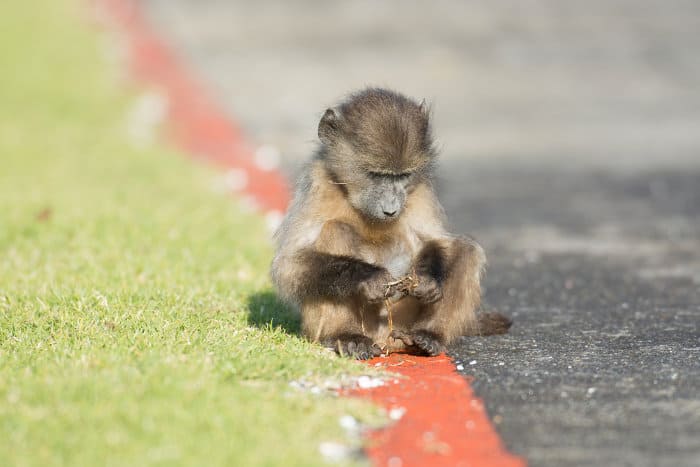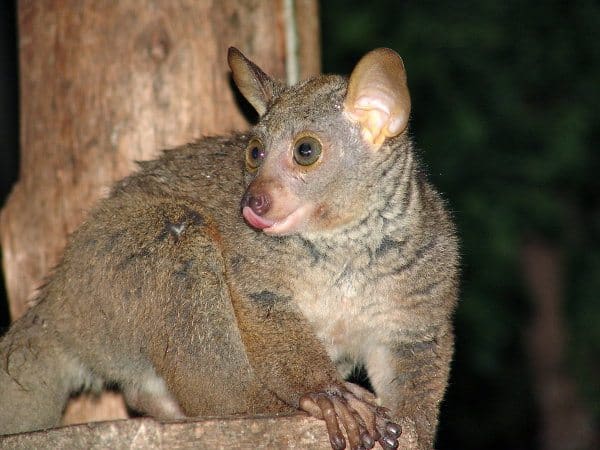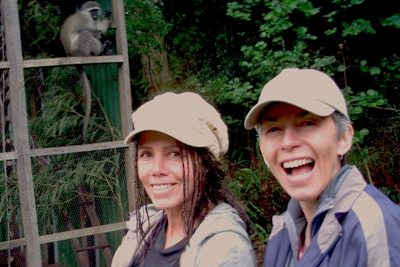Chacma baboons are big, scary and dangerous. They prowl Southern Africa in large troops, often coming in close proximity to people and towns. Raiding garbage bins and stealing shopping bags, they are considered a frightening nuisance.
But wait! This old-world monkey is massively misunderstood. It’s one of the cleverest of all the world’s animals. We should be celebrating these incredible creatures, which is exactly what we are going to do in this article.
1. Chacma are the largest of the baboons
Of the five different baboon species in Africa, chacma are comfortably the largest. It’s the longest of all the monkeys and almost the heaviest as well.
Males can weigh up to 45 kg (99 lbs) and be up to 115 cm in length. Add on a tail of 84 cm and you have one beast of a primate.
In comparison, the Guinea baboon is less than a third of the size, at just 50 cm and only 14 kg.
2. What’s with those strange bottoms!

The distinctive and somewhat ugly protruding buttocks are for a very practical reason. Chacma baboons spend most of the day sitting down – so they need a good amount of padding to support them.
When a female chacma comes into heat her bum will change color, indicating availability.
3. An omnivorous diet
Baboons are very similar to ourselves. They will eat just about anything and they are extremely resourceful, able to adapt their diet to the surroundings.
They eat a lot of fruits, all year round. Grass and other vegetation forms a large part of their diet, including desert truffles! They are experts at picking out insects and are also able to hunt and fish.
4. A monkey that goes fishing!

That’s right, chacma baboons go fishing. Well, those that live around the coast anyway. Of course they don’t use fishing rods. Instead, they wait for low tide and harvest shellfish, along with other marine invertebrates.
In general, baboons are not hunters. Yet they are carnivores. Most of their meat is scavenged. That used to be from cats and predators, but now it is from people as well.
5. Chacma baboons are widespread across Southern Africa
These baboons can thrive in different habitats. All they need is enough food and fresh water, just like any other mammal. So you’ll find them all across Southern Africa, except for the Kalahari and Namib deserts.
Their range stretches north to Southern Angola, northeast through Mozambique, up the mountains of Lesotho and across the savannah of Zimbabwe into Zambia.
They are most populous in South Africa – which is where the problem comes in.
6. These baboons scavenge from people
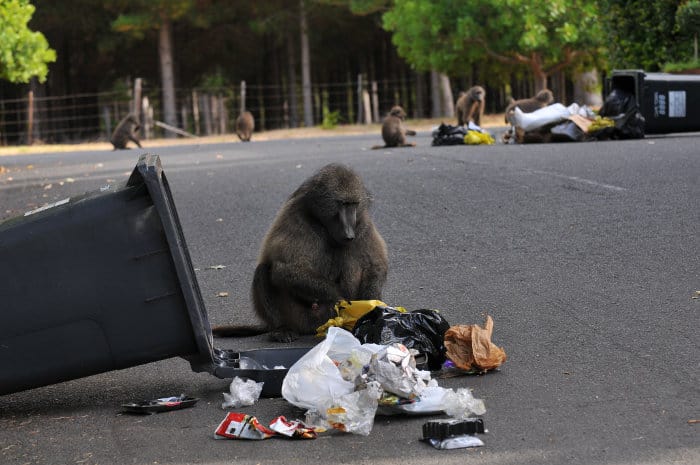
Troops travel into towns to raid garbage bins. They open cars and steal shopping bags. Carry anything that looks like food and chacma baboons will usually make a plan to grab it.
For example, large troops live in the no man’s land between Zimbabwe and Zambia, around Victoria Falls. You can be walking across the border and suddenly a baboon has robbed you of a packed lunch box!
7. Baboons can enter houses and cars
Check this video to see how effective the baboons are entering houses. They walk in and know exactly where the fridge is. Plus they can open car doors in the search for food as well.
8. Popular media has created an unwarranted reputation
All this scavenging has made the news. Read the headlines and it’s always the fault of the baboons. “Baboon wars” shout the headlines… “Criminal baboons terrorise South Africa” claims another. Check out Sky News with their news video: “rogue baboons cause havoc!”
You can tell by the language what to expect. But how can a baboon be a criminal? Is a hyena a criminal for stealing a kill from a lion? In the wildlife world it’s survival of the fittest, with nature writing all the laws.
9. Habitat fragmentation has forced baboons to scavenge
Chacma baboons weren’t scavengers a thousand years ago. As their natural habitat has become fragmented, they have come in increased proximity to people.
These baboons have less of their usual food to eat. And why eat fruit when there are leftover Burger King meals to enjoy!
It’s important to remember that communities and tribes had coexisted with chacma baboons for many centuries. Only recently have these issues started to occur.
Baboons have lost parts of their natural habitat and food source, so they have adapted in response – such an evolution should be celebrated!
10. Chacma baboons and people can coexist
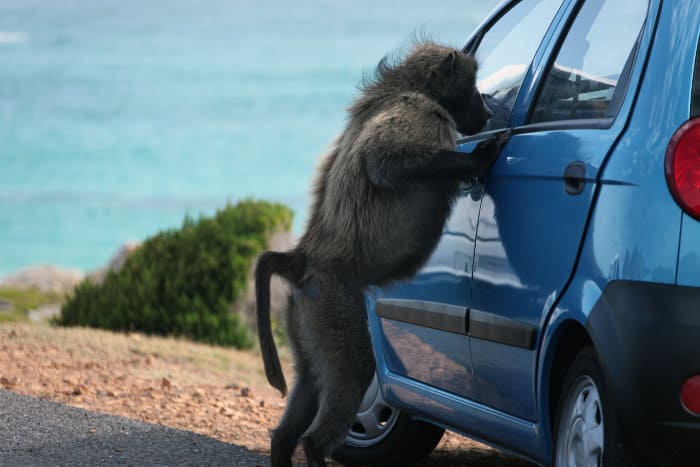
Let’s remember something. Across Southern Africa, chacma baboons have always lived around mountains, forests and coastlines. It’s only more recently that humans have entered these spaces in large numbers.
Chacma baboons came before Cape Town. While their behavior of stealing provides a little humour, let’s look at how these two primate cousins (humans and baboons) can coexist.
- Never ever feed or offer food to a baboon – this teaches them that humans equal food.
- Do not try to touch a baboon – they are wild animals.
- When taking photographs of baboons, keep your arms by your side and the camera close to your chest – this is less threatening to the baboons.
- Keep your vehicle doors locked when entering any area that is home to baboons.
- Accept and appreciate the beauty that these animals bring to the world.
Visit Southern Africa and you don’t need a safari to see these remarkable primates. You can be driving along and a whole troop is on the side of the road. Stop, admire, then move on, without interrupting the animals.
